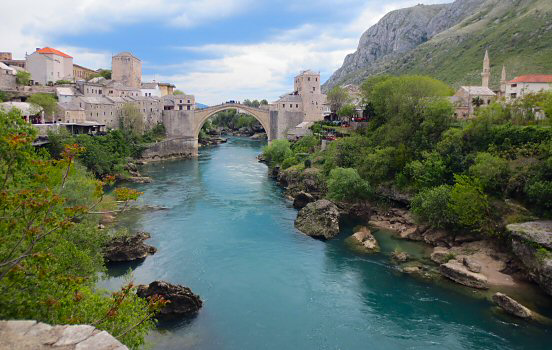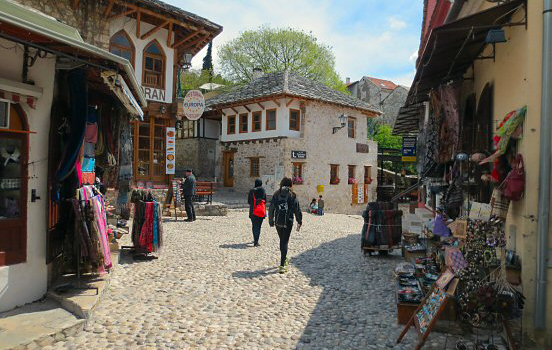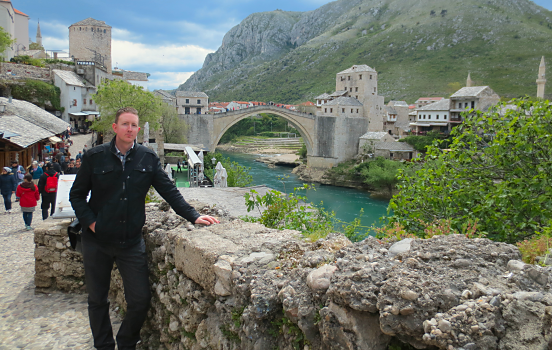Mostar hits me like a leftover war dream. Sun-bleached stones, bullet-pocked facades and the uneasy silence of a place still trying to remember how to forget.
 View from Koski Mehmed Pasa Mosque.
View from Koski Mehmed Pasa Mosque.
The deadly conflict that ravaged the Balkans in the 1990s claimed thousands of lives and reduced half a millennia of architectural wonders to rubble.
As with many places in Bosnia and Herzegovina, traces of the conflict can be seen in many forms. I pass through the cobblestone-clad alleys in the old town, where the houses still bear the scars of war in form of bullet holes in the walls. I walk past several tomb stones at a cemetery where most graves are marked 1993.
 Here be trinkets.
Here be trinkets.
The Neretva River slices through the city like a deep wound, emerald green and deceptively serene. Above it arches the iconic Stari Most, the Old Bridge, a reconstruction of a predecessor built in 1566 on orders of Suleiman the Magnificent during the Ottoman era. The original stood proud for 427 years before it was obliterated by mortar shells in 1993.
A decade later, it was reconstructed and the brave local youths could once again take up the habit of diving into the cold river, a tradition since 1664. I walk across the bridge which feels peaceful, but the air carries echoes of snipers and shrapnel.
 Along the cobblestones.
Along the cobblestones.
I ascend the narrow spiral staircase to the top of the minaret in Koski Mehmed Pasa Mosque. The wind is strong but the view of the river and Stari Most is breathtaking. From this height, I can try to forget the horrors of war for a few minutes.
Mostar isn’t a comfortable place. It’s here to remind us that beauty breaks. That people destroy what they once built. That bridges fall, and sometimes, if we’re lucky or stubborn, they may rise again.

Comments
No comments yet.
Leave a reply